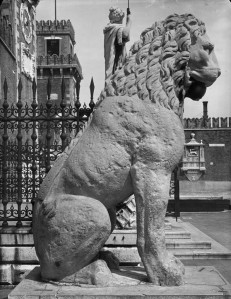For many, generally unedifying reasons, the term ‘medieval’ is bandied about online with increasing regularity. Of course the Middle Ages in the West saw more than its fair share of brutality, misogyny, religious absolutism and the plunder or outright destruction of ancient cities. Frequently this was inflicted by Christians on marginally different Christians.
The forces who, led by Doge Enrico Dandolo and the Marquess of Monferrato, sacked Constantinople in 1204 did so seemingly out of avarice and a vague desire for revenge against the scarcely blameless Eastern Orthodox population of the city. Thousands were killed, thousands were raped, and thousands of precious artworks were looted or destroyed. The public spaces of Venice are still decorated with the spoils of that campaign. During the Albigensian Crusade, the infamous sack of Béziers ended with the city’s entire population, an estimated 20,000 people, dead, attributed in part to the chilling order of Arnaud Amalric, the Papal Legate: ‘Cedite omnes; novit enim Dominus qui sunt eius’ [kill them all, for God will know who are his].
Recorded history is filled with such events, from the sack of Persepolis by Alexander, to the burning of Heidelberg by Louis XIV, to the Sook Ching massacre during the Japanese occupation of Singapore, to the wholesale looting of the National Museum of Iraq. I scarcely need to argue that these events were not medieval; as the novelist and medievalist T.H. White often reflected, we are a brutal species.
Something something something Lannisters.
One artefact sums up for me this history of looting and slaughter. The Piraeus Lion stood in the Athenian port of Piraeus for perhaps 1,500 years before Francesco Morosini, later Doge, attacked Athens and bombarded the Parthenon. It was taken to Venice in 1687, and now stands outside the Arsenale, Venice’s military dockyard. Over a century after it was brought to Venice a Scandinavian antiquarian made the first modern translation of a series of runes that run down its right shoulder, and discovered that they related to the exploits of the Varangian Guard, Scandinavian and Kievan mercenaries loyal to the Byzantine Emperor, including someone who may perhaps have been Harald Hardrada. Amongst them,
Asmund cut these runes, along with Asgeir and Thorleif, Thord and Ivar, at Harald the Tall’s behest.
And,
Egil is gone on expedition with Ragnar into Romania and Armenia. (Trans. Carl Christian Rafn.)
The statue itself was the spoils of a war, perhaps a sore point to the Ottoman rulers of Athens but hardly an unexpected loss. The Varangians, insofar as they can be classified at all, seem to have been an elite force of foreign fighters, like the Swiss Guard if the Swiss Guard wore fur coats and went on raiding trips to Sicily. Their presence in the Byzantine Empire and their vandalism of an ancient marble statue show how deeply ingrained war was as a way of life even in metropolitan centres. But the Varangians, as rough as they may have been, still had a code of honour. The eleventh-century historian Georgios Kedrenos gives the sole account of an interesting case in the 1030s:
A man of the Varangians, who were scattered in winter quarters in the Thracesian theme, met a woman of the region in a private place and tempted her virtue; and when he could not get her to agree willingly he tried to rape her, but she got hold of the foreigner’s sword and struck him with it through the heart, so that he died at once. When this deed become known through the neighbourhood the Varangians gathered together and honoured the woman by giving her all the possessions of the man who had attempted to rape her, and they threw away his body without burial, according to the law about suicides. (Trans. Benedict Benedikz.)
It is unclear to me whether Kedrenos had any particular interest in painting the Varangians in a good light. Such events are not recounted elsewhere and, if true, this may have been a one-off, yet the actions of the Varangian guardsmen, denouncing their dead companion and supporting his victim, may come as a surprise to those for whom ‘medieval’ is synonymous with violent misogyny. I cannot try to persuade people that the Middle Ages were a time of peace, tolerance and free love, because for the most part they were not. But please remember that not all ‘medieval’ actions are terrible, and not all terrible actions are ‘medieval’.


The Varangians do seem an ‘interesting’ crowd! One Byzantine Empress (Theodora? My memory…!) also wrote on them.
This a great post, full of really interesting material. Great stuff!